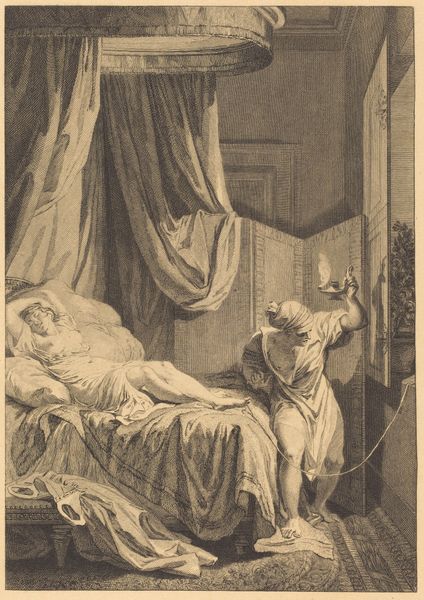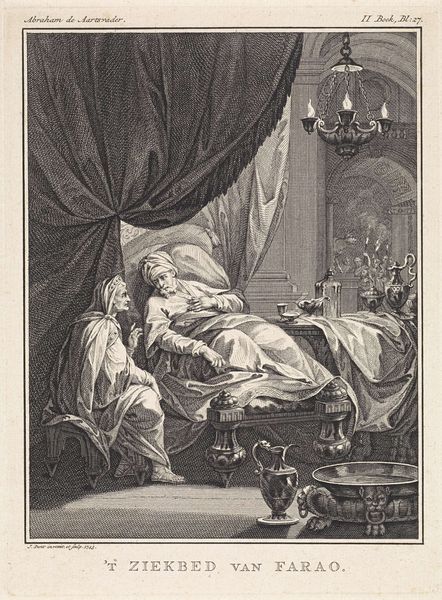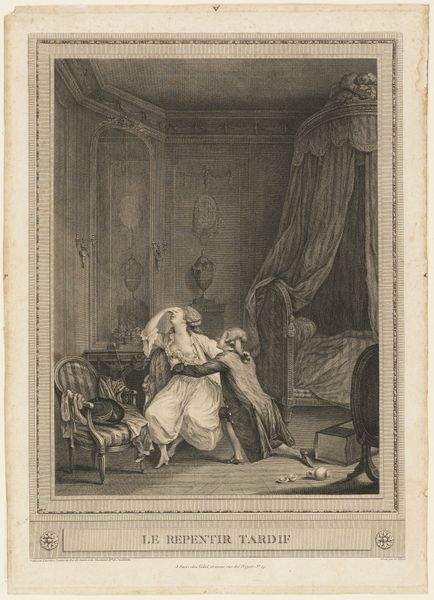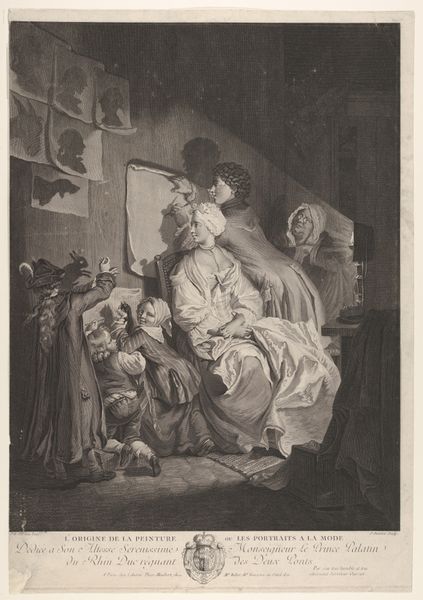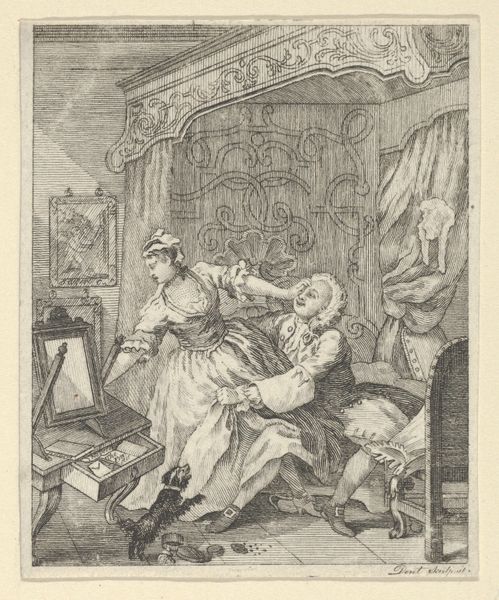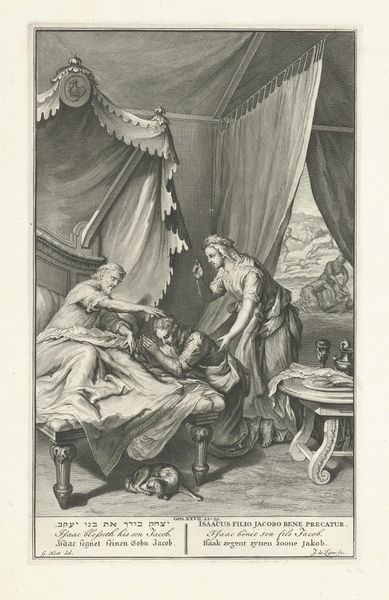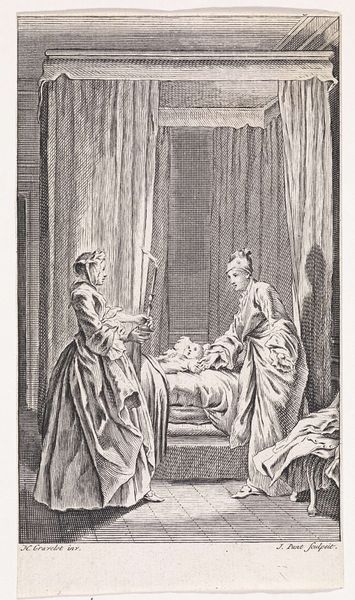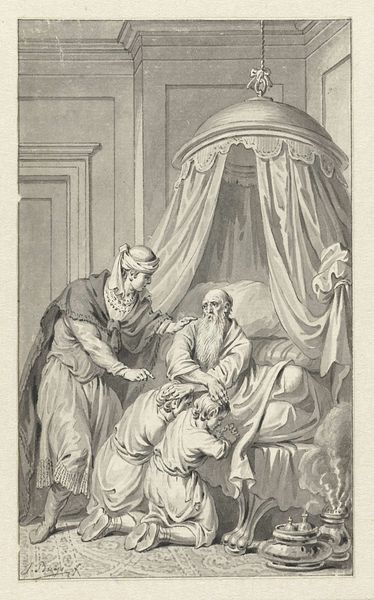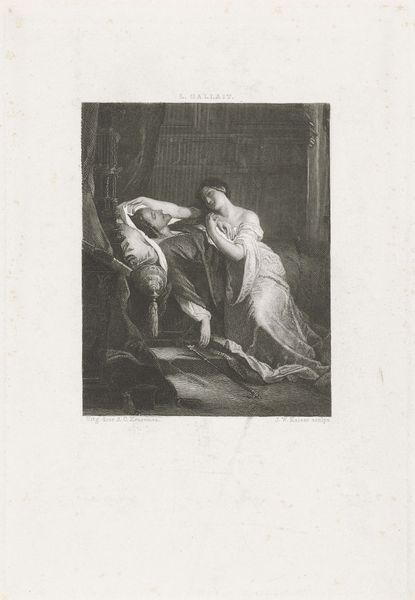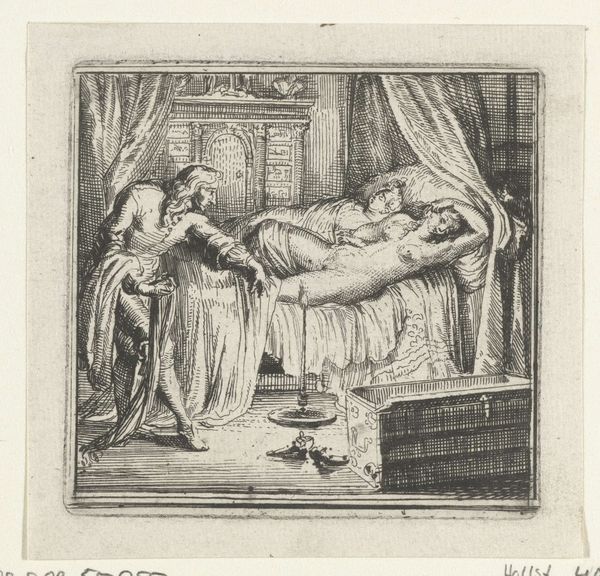
print, engraving
#
portrait
#
baroque
# print
#
caricature
#
portrait drawing
#
genre-painting
#
history-painting
#
engraving
Copyright: National Gallery of Art: CC0 1.0
Editor: This print, titled "La gageure des trois commeres: Le fil", seems to be an engraving depicting a scene within a bedroom. The mood is quite unsettling, with a woman seemingly up to no good near a sleeping figure. What’s your interpretation of this work? Curator: That unsettled feeling is key. Engravings like this were often part of a broader culture of social commentary, distributed widely through print media. This "gageure," or wager, likely alludes to a contemporary scandal or social commentary dressed as a historical or genre scene. Considering the period and the visual cues, what socio-political issues might this wager be hinting at? Editor: I’m not entirely sure, maybe a commentary on wealth or marriage, given the intimacy of the bedroom scene? Curator: Precisely. The composition is key: the opulence of the bedroom contrasted with the almost farcical actions of the woman pulling the thread, suggests a critique of aristocratic excess and perhaps the power dynamics within such relationships. This sort of print satirizing the wealthy was popular – almost like early political cartoons. Do you notice anything about how the figures are rendered that supports this interpretation? Editor: Well, the woman holding the light has exaggerated, almost cartoonish features compared to the figure in the bed. Is that intentional? Curator: Definitely intentional! That exaggeration works to make it comedic and accessible, ensuring the message resonated with a broader audience and cementing its cultural critique. Editor: That’s fascinating. I didn’t realize prints could carry such pointed social messages. It makes me see it completely differently. Curator: Exactly, prints served as a vital form of public discourse. Analyzing its distribution and reception reveals so much about the society of the time.
Comments
No comments
Be the first to comment and join the conversation on the ultimate creative platform.
